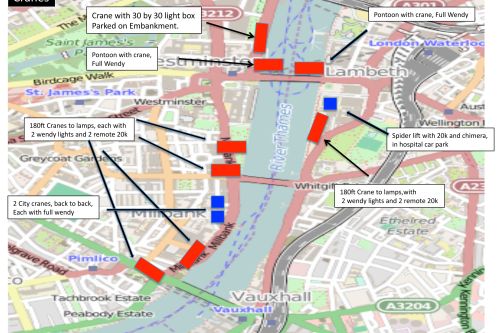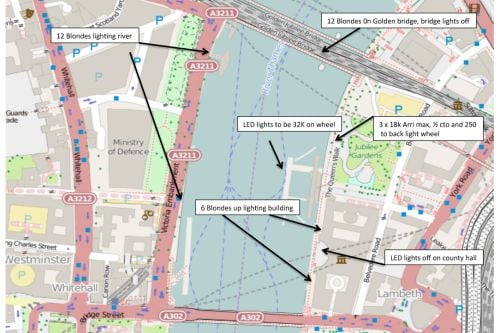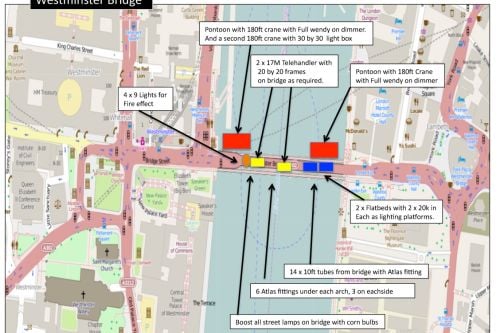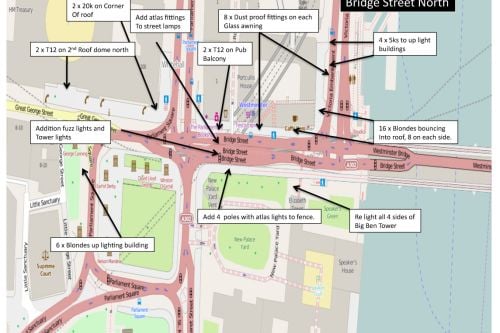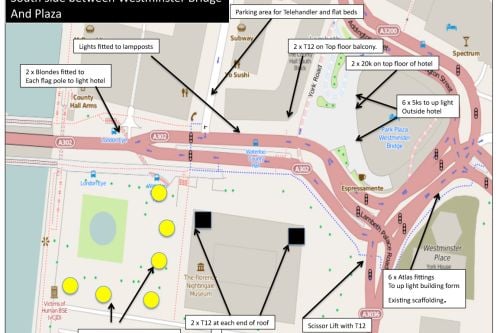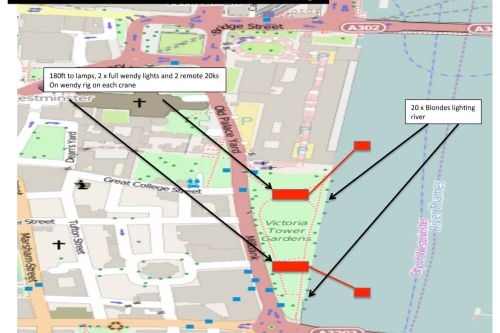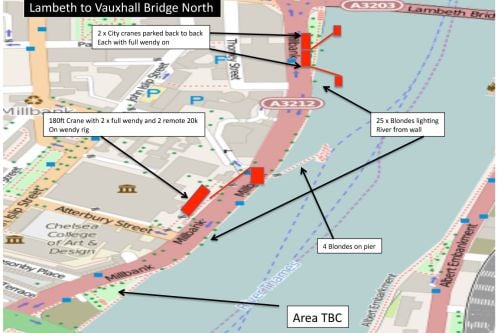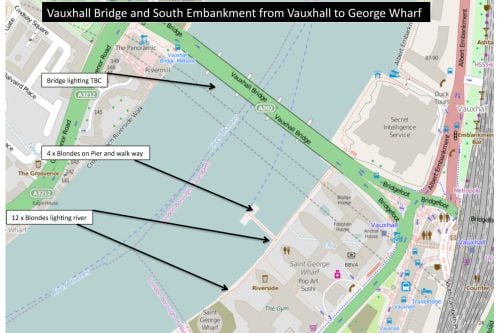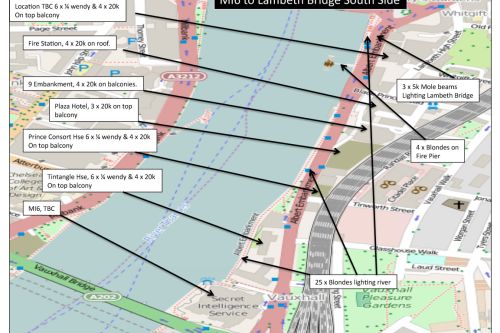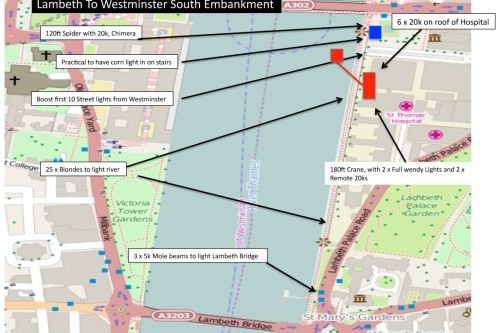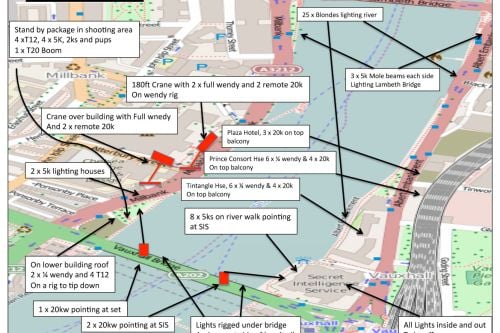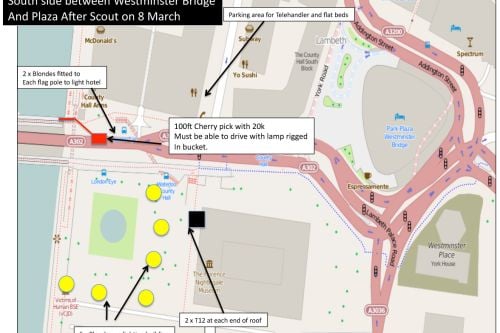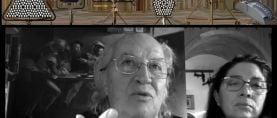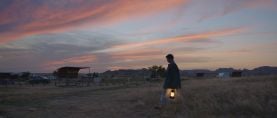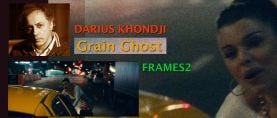
Hoyte van Hoytema, ASC, FSF, NSC - Lighting Spectre
An interview with cinematographer Hoyte van Hoytema, FSF, NSC, and gaffer David Smith about some of their lighting setups for the James Bond movie Spectre.
This post focuses on some of the lighting setups in Spectre, with comments by cinematographer Hoyte van Hoytema, ASC, FSF, NSC, and his gaffer David Smith. This post complements my interview with director Sam Mendes, and expands on my article in the November 2015 issue of American Cinematographer.
Hoyte van Hoytema
1. Sam Mendes
2. Gaffer David Smith
3. Palazzo Night-Interior Set
4. Soft Night Exterior
5. “Ice Q” Day-Interior Set
6. London by Night
+++
Hoyte van Hoytema
Hoyte van Hoytema is a Dutch cinematographer who went to the Lödz film school in Poland, and then started his career in Sweden. He has shot a dozen features, and first received international acclaim for his work on the Swedish film Let The Right One In, a stunning child-vampire story by Tomas Alfredson. Hoyte's subsequent English-language films include: The Fighter by David O. Russell, Her by Spike Jonze, Interstellar by Christopher Nolan and Spectre by Sam Mendes. Hoyte was nominated for an ASC Award for Tinker, Tailor, Soldier, Spy, also by Alfredson, and received BAFTA nominations for that film and Interstellar.
+++
1. Sam Mendes
When I spoke with Hoyte about the lighting on Spectre, he started with his collaboration with director Sam Mendes.
Benjamin B: You have told me that your collaboration with Sam Mendes was key to your cinematography.
Hoyte van Hoytema: Yes. Sam told me once that within the whole machinery of filmmaking, cinematography was very close to his heart. I can confirm that. His love for cinematography created great companionship, trust and access. I have to thank Sam. He has an awe-provoking command over every aspect of filmmaking, yet he puts a lot of trust in his co-workers, and he is very secure and humble about letting people influence him. He is a director in the most complete sense of the word.
+++
2. Gaffer David Smith
Hoyte also spoke about the importance of his collaboration with gaffer David Smith. David is no stranger to big films: his recent credits include Guardians of the Galaxy and Avengers: Age of Ultron. At Hoyte's suggestion, I also interviewed David about the lighting setups, and I have mixed his comments in with Hoyte's.
How did you work with David Smith?
Van Hoytema: I love David, we had great fun together, but he was also a rock for me. He made everything feel much easier than it really was. He's on top of everything, he's fanatical about the details, and he's such a pleasant person to have around. He did fantastic work for me. David was crucial to me, solving problems, and when he came with ideas I was all ears because he always made sense.
+++
3. Palazzo Night-Interior Set
Can you talk about the set of a Grand Hall where the Spectre meeting takes place around a huge table?
Van Hoytema: In this photograph of the crane, you can see part of the soft box above the table, with silk on it. The grid has skirts to prevent spill. We could move the box up and down.
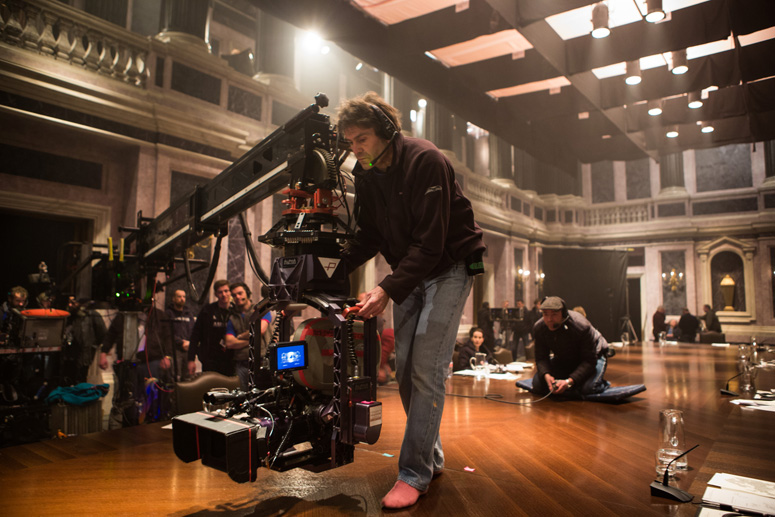
One of the key things about the lighting is that the bad guy, played by Christoph Waltz, stays in the shadows as he enters the room, and his face is only revealed when he sits down and looks up at Bond.
Van Hoytema: It was important that the light be very soft and non-directional, yet we had to be able to cut it as if it were a hard light to keep light off Christoph. And that was very much a challenge. So we moved the box down very low for a lot of the shots on Christoph, and we kept light off him with negative fill.
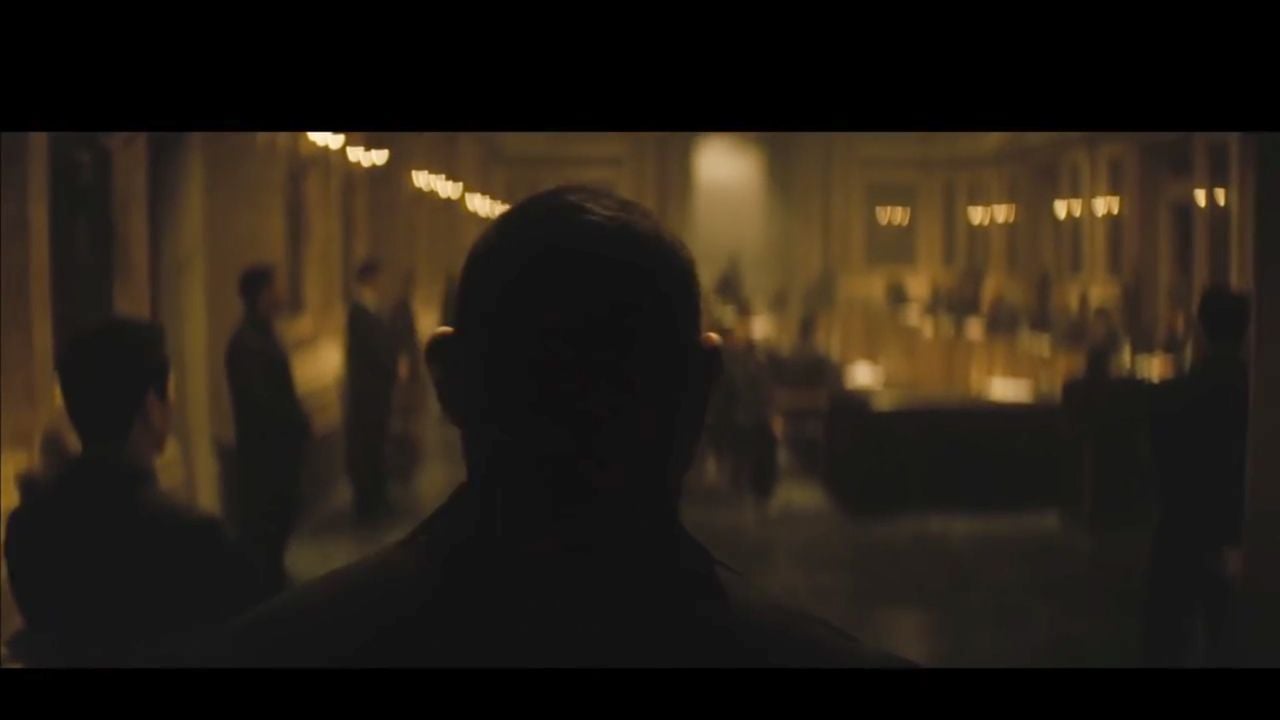
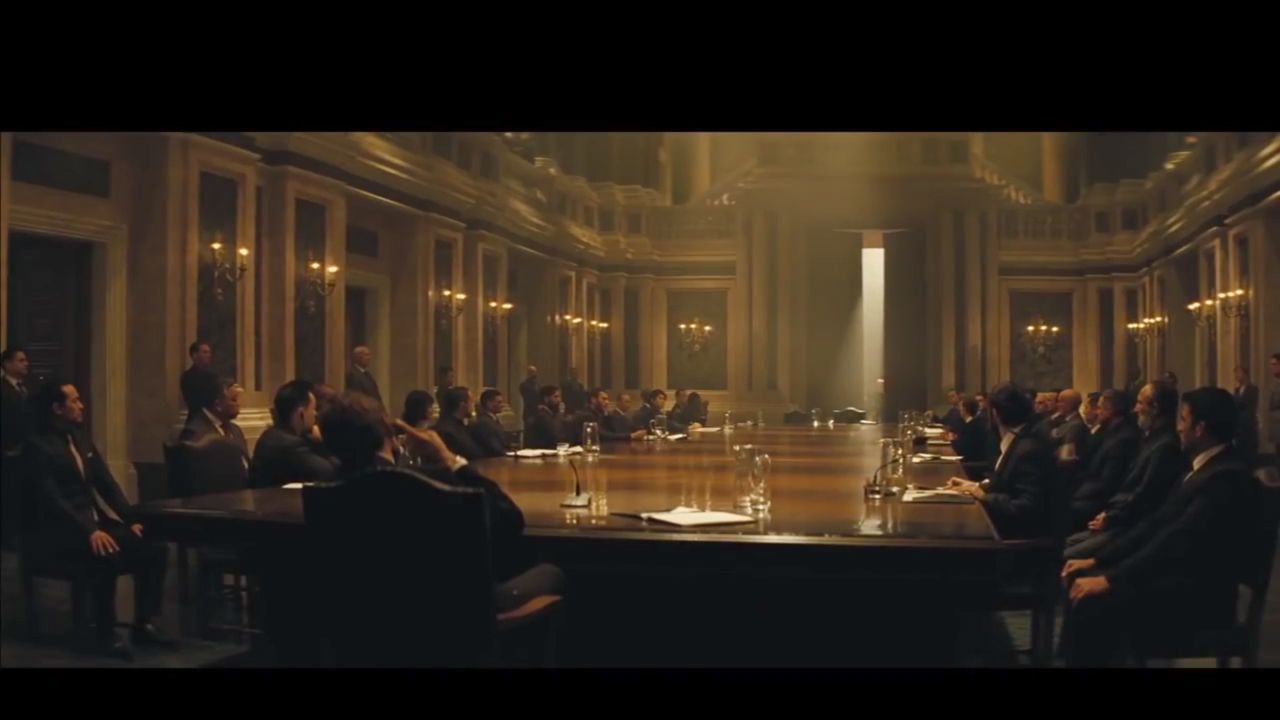
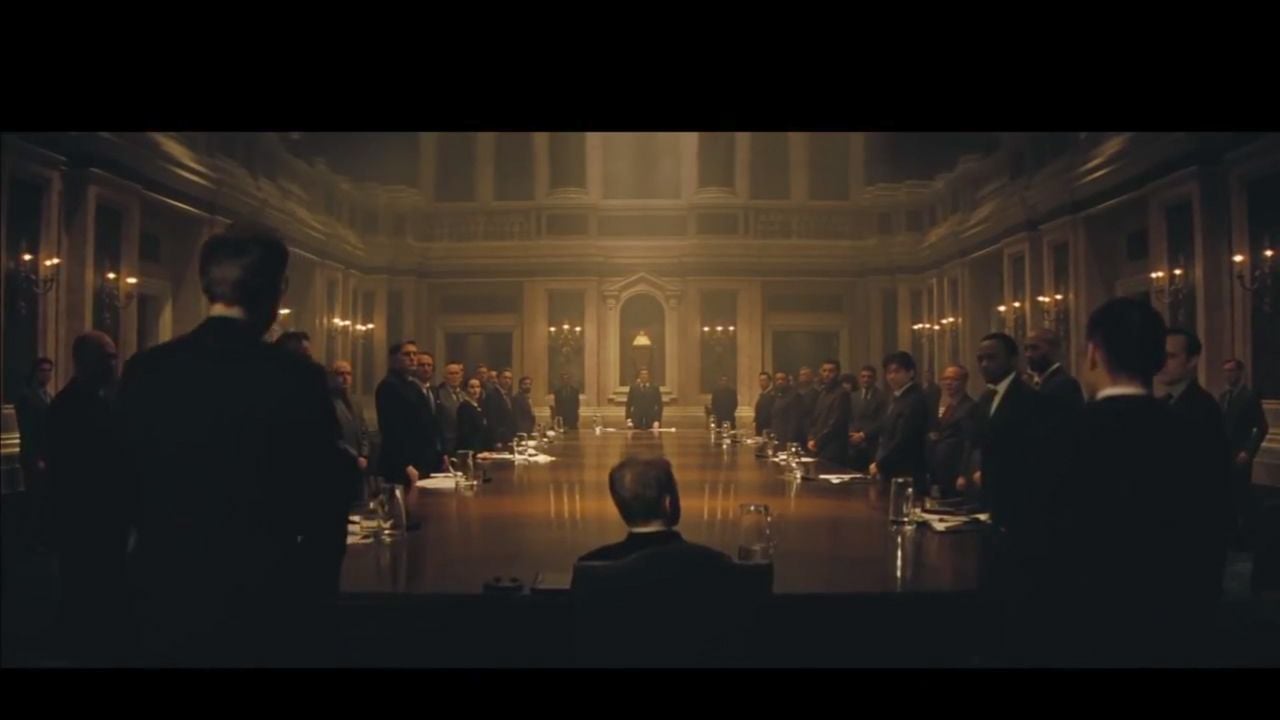
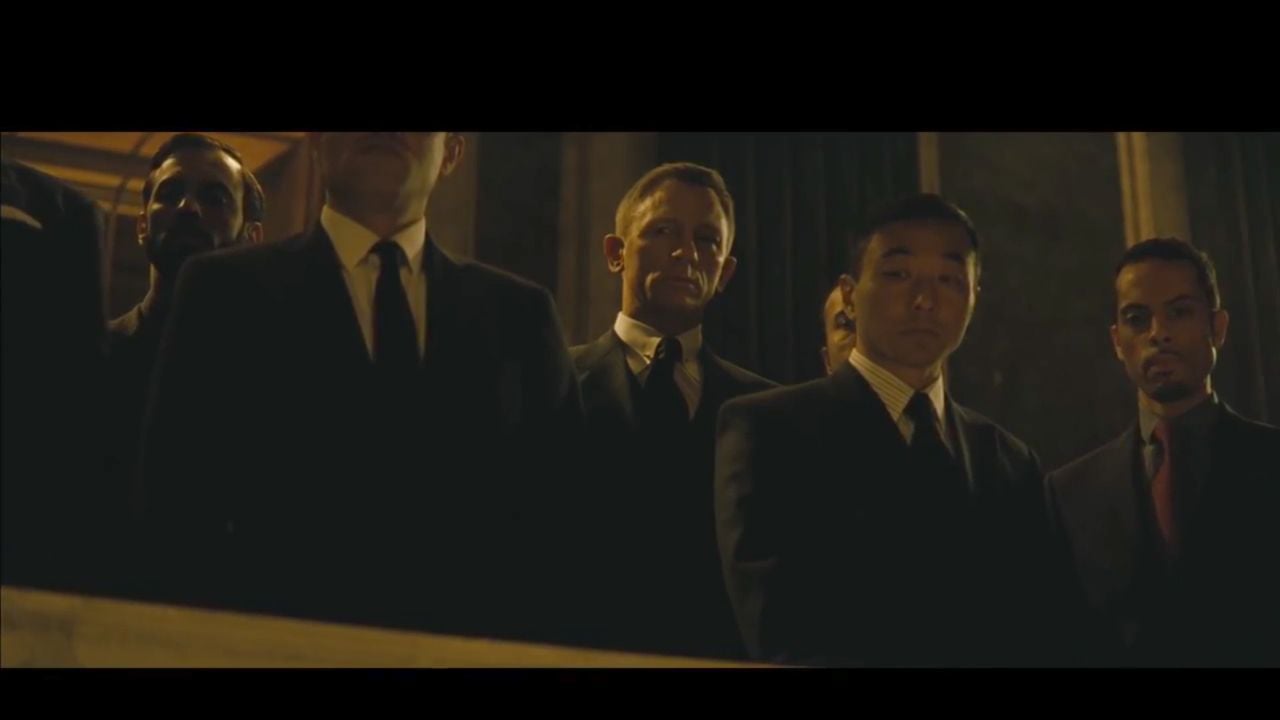
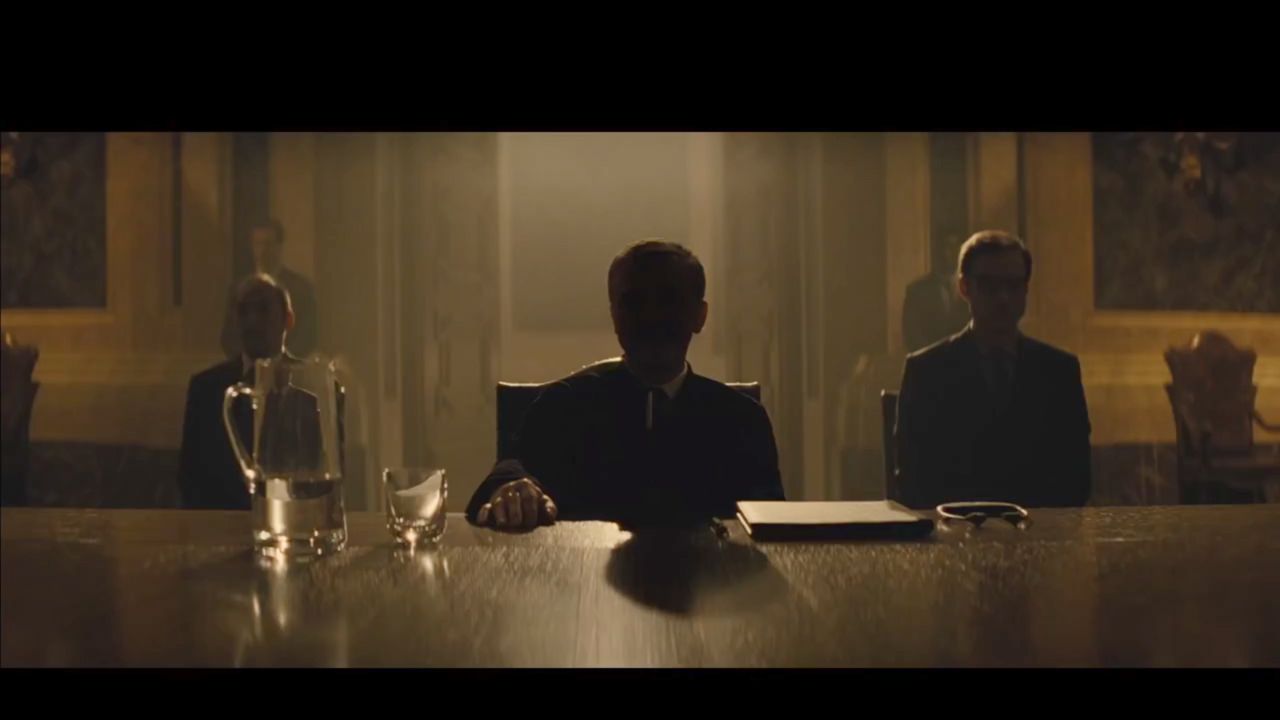
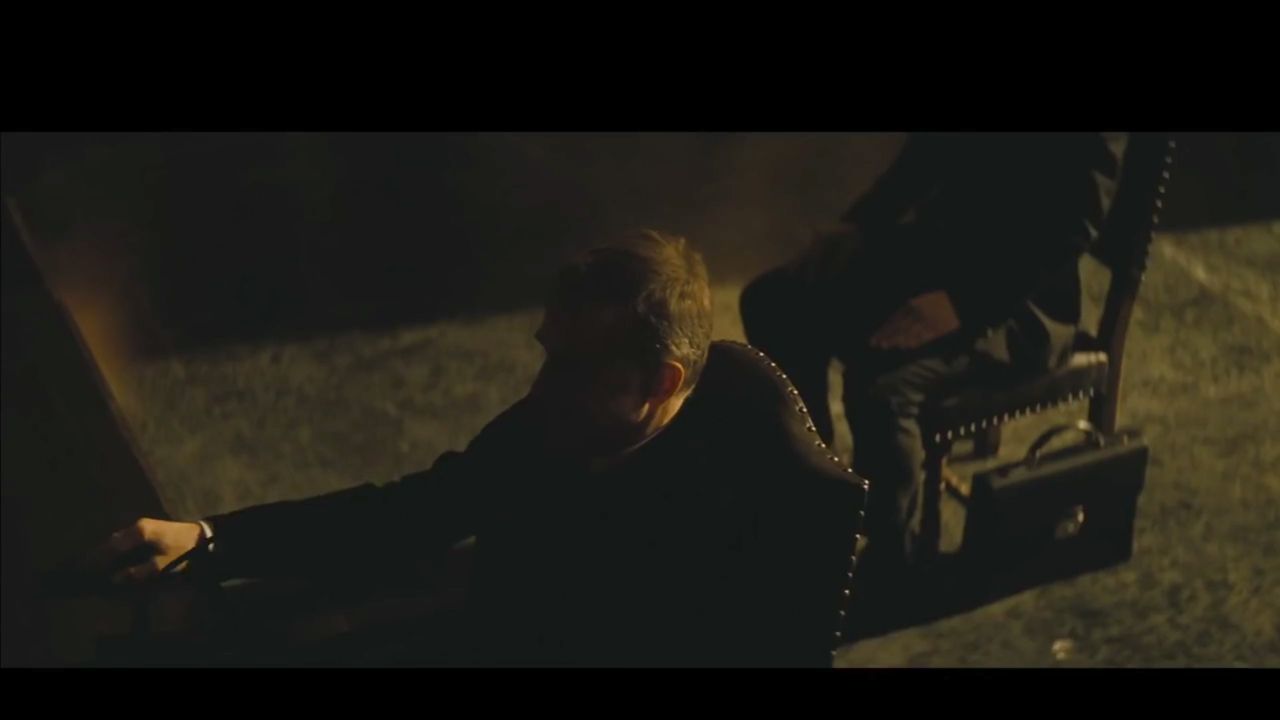
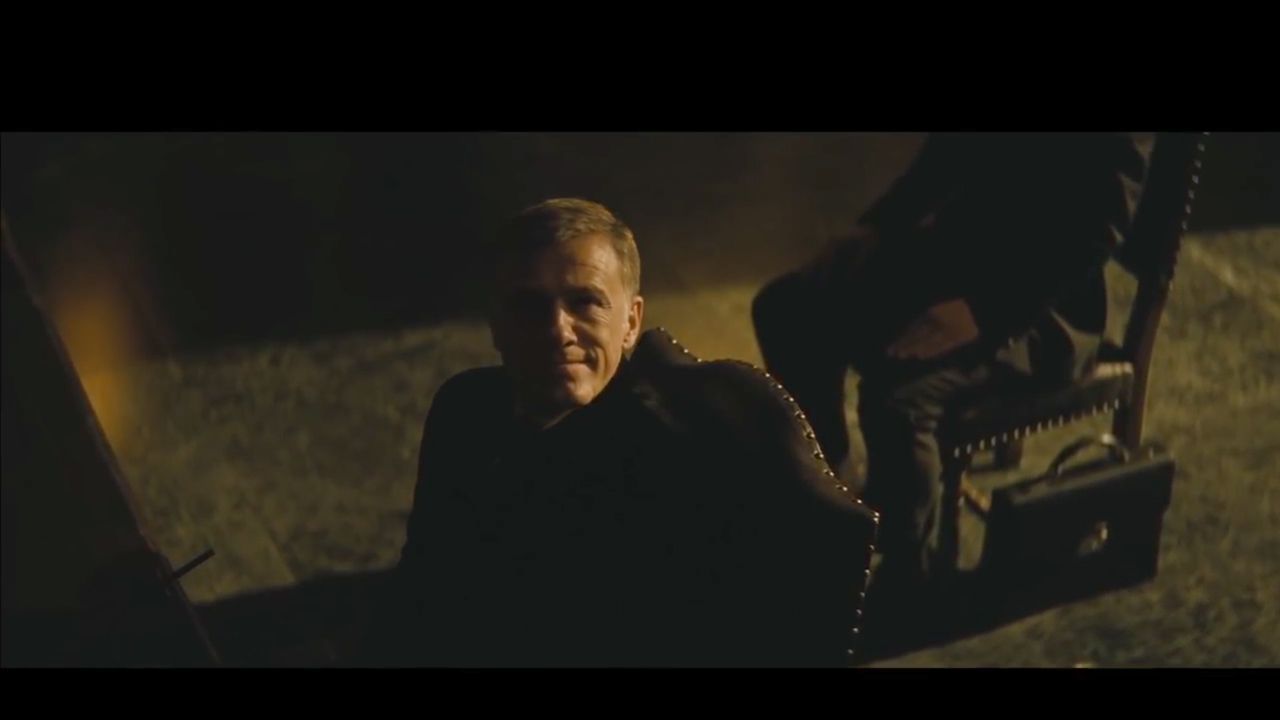
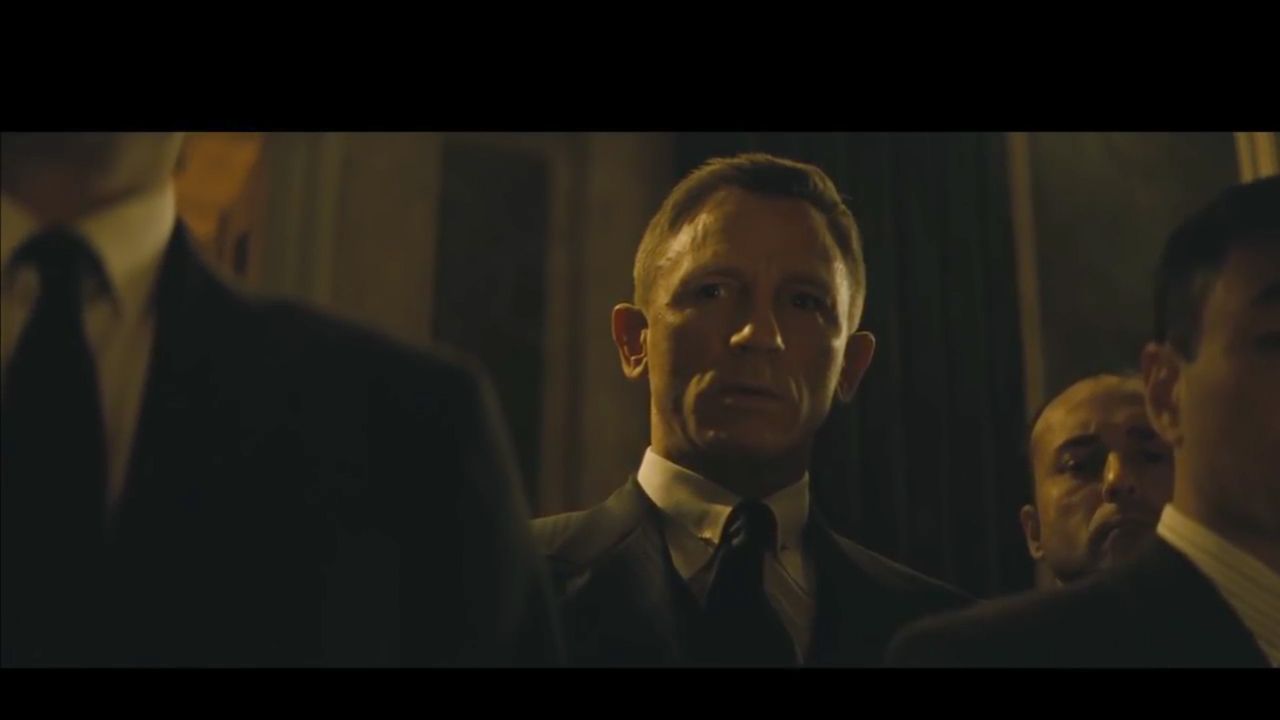
---
When Waltz enters the room, he is backlit by a T12 that puts him in silhouette.
Van Hoytema: The idea was to keep him dark, which is a film-noir idea. But I was afraid it would feel very contrived if he came into and out of the light like Marlon Brando in Apocalypse Now. I felt like this place had to have a kind of richness and glow, not stark light and dark, but at the same time we wanted him to appear out of darkness. Also, I wanted to keep everything real in terms of light directions. So, my idea was to have a big source behind the monumental door so that light streamed as the door opens, and Christoph would be silhouetted by this light behind him. Then, when he looks at Bond, the same light source hits him and reveals him.
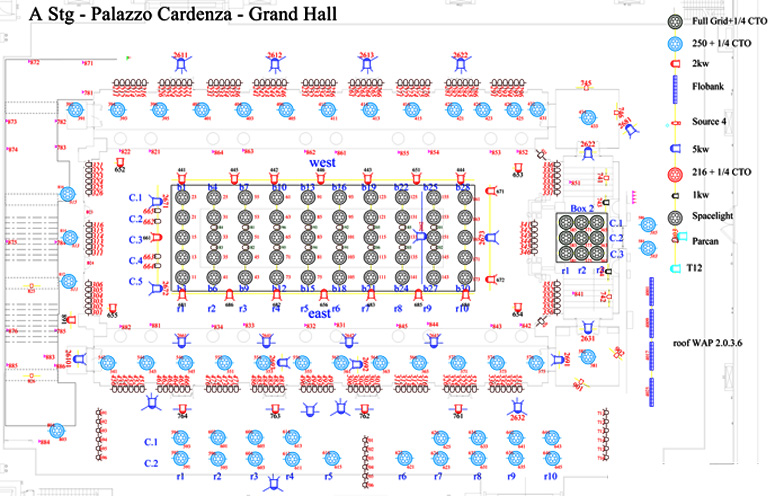
David, could you detail some of the sources used on this set?
David Smith: There were 50 space lights in the soft box. We used an electric tackle to take it up and down. We added a silk that had a ¼ CTO dyed into it to warm the whole thing up. Everything is on dimmers, and all the sources are brought down to 2600 Kelvin either by dimming them or gelling them. The 2Ks in the center are shooting down to highlight the areas around the practicals. We put Par bars all around just to have the option to pick out columns and people, to be able to put accents everywhere.
How did you get those stripes of dark and light on the table?
Smith: They are made by Par cans with medium bulbs; we spun the bulbs so the beams were horizontal across the table, creating lines all the way down the table.
There are a lot of light sources on this set.
Van Hoytema: Many of these lights are dimmed way down. Having a lot of sources, even if they’re very dim, enriches the space and makes it grow. Also, it makes it faster to get some backlight when you change camera directions.
+++
4. Soft Night Exterior
Can you talk about your use of soft boxes in night exteriors, like the two in this photo outside Blenheim Palace, which stood in for the Roman palazzo where Spectre has its meeting.
Van Hoytema: We used soft boxes on several occasions. These two are 40-by-40 feet, and they light a collection of super-expensive cars parked in front of the palace. I liked the soft, subdued character of these lights; they have a kind of glow that I really like.
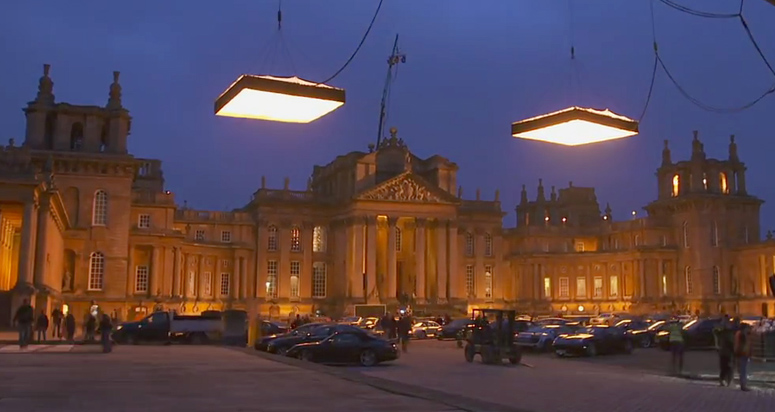
Soft light from above reminds a little of your gentle night exteriors in Let the Right One In.
Van Hoytema: Yeah. The funny thing is that my way of night lighting hasn’t changed. I mean, the scale has changed, but the character of that light is very similar: a nondescript ambient light coming from above. In Let the Right One In, I used cranes or sky lifts to suspend frames above the snow and aimed light into them from below that would bounce very softly back.
The soft boxes here give a similar quality of light, but the intensity is much more controllable. Here the shadows are very soft, also because you have two of them, and it’s a wide spread.
This is like a soft night fill?
Van Hoytema: Yeah, it is. The brighter parts of the castle would be around key, and the ambient light in the parking lot would be 1 1/2 or 2 stops under. It’s about getting night shots that don’t feel noir-ish; it’s not black-and-white, but more about getting that nice, low, subdued level where you feel it’s dark and gloomy, but you have enough detail so that you can scan the frame to see what’s around. For me, it’s very rich night.
What kind of units did you use in the soft boxes?
Van Hoytema: I think we had a grid of Flobanks, the same ones we used with the Translite. The Flobanks are not super punchy, but they’re punchy enough, and we had more than enough light. Space lights can get hot, and they change color when you dim them down.
In a way, it doesn’t really matter what kind of sources you put in a soft box. It doesn’t change the character of lighting. If you can keep your temperature consistent, and if you get the output you need, then you’re good to go whether it’s tubes, space lights, LEDs or whatever.
+++
5. “Ice Q” Day Interior Set
You used Translites a lot on the Spectre sets.
[Translites are giant translucid photographs used as backgrounds on sets]
Van Hoytema: I’m very much for doing things in-camera. I want the images to guide post more than the other way around, and that’s why I like to use Translites. I love to create environments on the soundstage that are as realistic as possible for the actors. When you’re standing in the set, everything looks pretty real. The only difference is that although the actors are dressed in winter clothes, the studio is actually quite warm.
It’s such a wonderful feeling to have actors walk onto a set and start settling in as if they’re really in a location, without having to use their imaginations. I also love working with low light levels for that same reason. That’s also the reason I love to keep my lights outside the set. Even on a soundstage, I like to have my sources come through the windows. I try to have as few lights on set as possible because they break the magic — they pop the balloon.
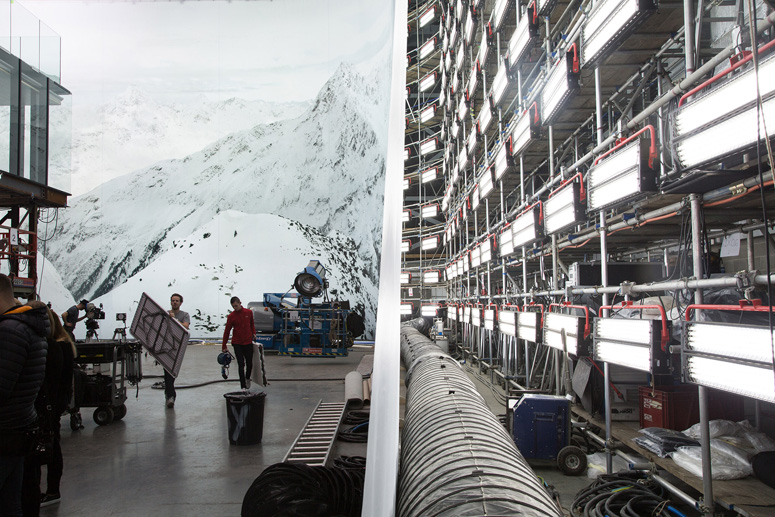
Can you talk about the huge set of an Austrian spa with the giant Translite?
Van Hoytema: The building was three stories high and mostly glass, and the Translite background of snowy mountains went 360 degrees around it from floor to ceiling. The set was meant to be a clear, overcast day, so I wanted to light it with daylight sources to be naturalistic. To get convincing Translites, you need big sizes and distances. The glass panes in the building also helped here, because we got reflections of the Translite from all sides.
How did you light the Translites for the spa set?
Van Hoytema: With a big Translite, you have to take temperature into consideration. With tungsten or HMI lights, the stage would have become unlivable. Also, we couldn’t use big light sources behind because we had keep the footprint as small as possible. So we made a giant rib of fluorescents all around the set.

David, could you detail the fixtures used on this big glass set?
David Smith: Everything was daylight balanced. All the fluorescents and LEDs were fully dimmable and DMX-controlled. We used Panalux Flobank fixtures behind the Translite. Flobanks have two groups of four 54-watt tubes. We had a silk 'sky' above the set roof with Panalux Hilights lighting from above. The Hilights have eight 55-watt tubes. Because the building is all glass, this gave an overall sky ambient light when you saw reflections of it.
We had rows of 2-by-2 LED Tektiles to give a sense of light direction from the two 'brighter' sides of the building. We had six K5600 4K Alphas beaming down the central atrium, which we used because you can burn them pointing straight down.
Not pictured on the diagram are 16 18K Arrimaxes that we moved around the floor of the stage outside the building. They were aimed at Ultra Bounce frames on trusses above the Translites. We could lower and angle the frames as needed with electric motors to get a soft daylight key into the building.
Van Hoytema: The 18K Arrimax is one of my favorite sources. It's always in my packages. They’re very powerful, and their design allows for much more output than traditional Par lights. I also use them directly through frames to simulate sunlight.
They add a feeling of sun behind the clouds.
Van Hoytema: Exactly. Our starting point was a mundane, overcast reality, which was created with those hundreds of Panaflos, but you have to add the 18K bounces to make the image a little bit more interesting and, say, romantic.
+++
6. London by Night
The London night exterior was an epic installation that only a James Bond film could get away with.
Van Hoytema: It took five weeks to set up. David Smith and his crew set up eight construction cranes and two floating pontoons on the Thames to place eight Full Wendys and a 30-by-30 soft box along the riverfront between four London bridges, plus dozens of other fixtures on the shore. We had 28 generators. It’s the biggest lighting setup I’ve ever done, and it might be one for the Guinness Book of World Records!
The full lighting rig for the Thames shoot included 30 20Ks, primarily on rooftops; eight Full Wendys on cranes and barges; 24 Quarter Wendys, mainly on rooftops; 25 T12s, rigged on rooftops and on stands along the water; 16 10Ks, 12 5Ks and 50 Blondes, mostly on stands along the river; and 150 1,250-watt Atlas fittings, which took a crew three weeks — working at night — to rig beneath the bridges.
It would take too much space to describe the entire installation, but David Smith kindly shared the following 12 pages of diagrams documenting this massive setup.
+++
LINKS
thefilmbook: Spectre: Interview with Sam Mendes
+++
imdb: Hoyte van Hoytema
imdb: Gaffer David Smith
wikipedia: Let the Right One In by Tomas Alfredson
with cinematography by Hoyte van Hoytema
wikipedia: Translight
Arri: T12
Panalux: Flobank
K5600: Alpha 4K
Arri: Arrimax 18K
+++
Unit photography by Jonathan Olley, François Duhamel, Stephen Vaughan and Jasin Boland, SMPSP, courtesy of Metro-Goldwyn-Mayer Studios, Inc.; Danjaq, LLC; and Columbia Pictures.
Thanks to gaffer David Smith for providing lighting diagrams.
A special thanks also to Heather Callow.
+++
You may also be interested in:
+++
You may also be interested in
thefilmbook: Storaro Muses, An Illustrated Video
thefilmbook: Lighting Sicario - Roger Deakins
thefilmbook: Lighting Spectre - Hoyte van Hoytema
thefilmbook: Eric Kress Lighting Workshop 1
thefilmbook: DPs & Gaffers: Who Does What?
thefilmbook: 3 Scenes from Ida
thefilmbook: 4 More Scenes from Ida
+++
